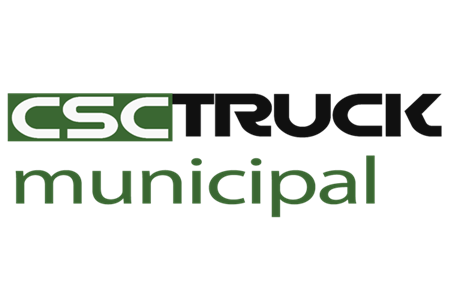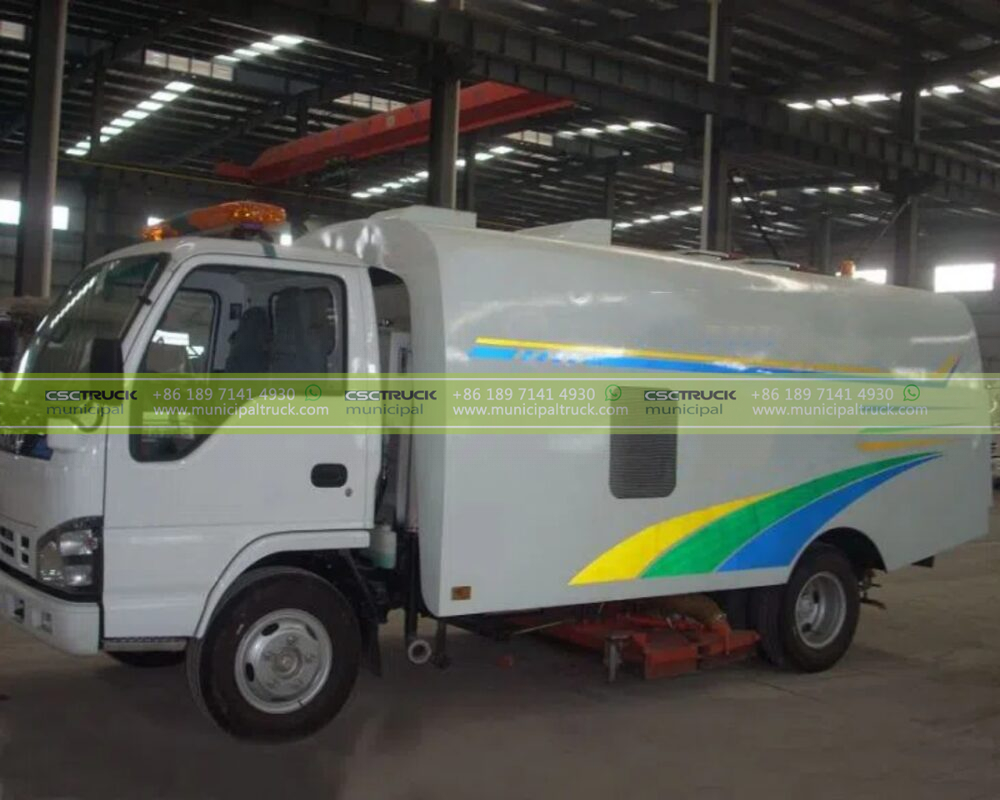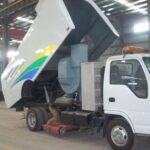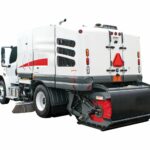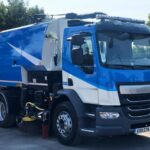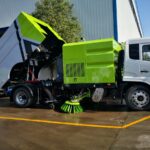Cleaning our streets and public spaces is a vital task for maintaining the cleanliness and hygiene of our urban environments. Traditional street sweepers have been a common sight on city streets for decades, but they often rely on water as a primary means of cleaning. However, with increasing concerns about water scarcity and environmental sustainability, there is a growing need for innovative solutions that can clean our streets effectively while minimizing water usage. Enter the “Waterless Sweeper Truck,” a sustainable cleaning innovation that is making waves in the world of urban sanitation.
The Challenge of Traditional Street Sweepers
Traditional street sweepers are large vehicles equipped with brooms and water spray nozzles designed to clean streets and remove debris. While they serve an important purpose in keeping our streets clean, they come with some significant drawbacks:
1. Water Consumption: Traditional street sweepers use a substantial amount of water for cleaning. This water is sprayed to control dust and assist in sweeping debris into the sweeper’s hopper. In water-scarce regions, this can be a significant issue.
2. Environmental Impact: The water used by traditional sweepers can carry pollutants and contaminants into stormwater drains, rivers, and other natural water bodies. This can harm aquatic ecosystems and contribute to water pollution.
3. Energy Consumption: Street sweepers are typically powered by diesel engines, which emit greenhouse gases and contribute to air pollution.
4. Limited Efficiency: Traditional sweepers may not be as efficient in capturing fine dust particles, and they often require multiple passes to achieve a thorough cleaning.
Recognizing these challenges, innovators and manufacturers have been working tirelessly to develop more sustainable and efficient alternatives, leading to the emergence of waterless sweeper trucks.
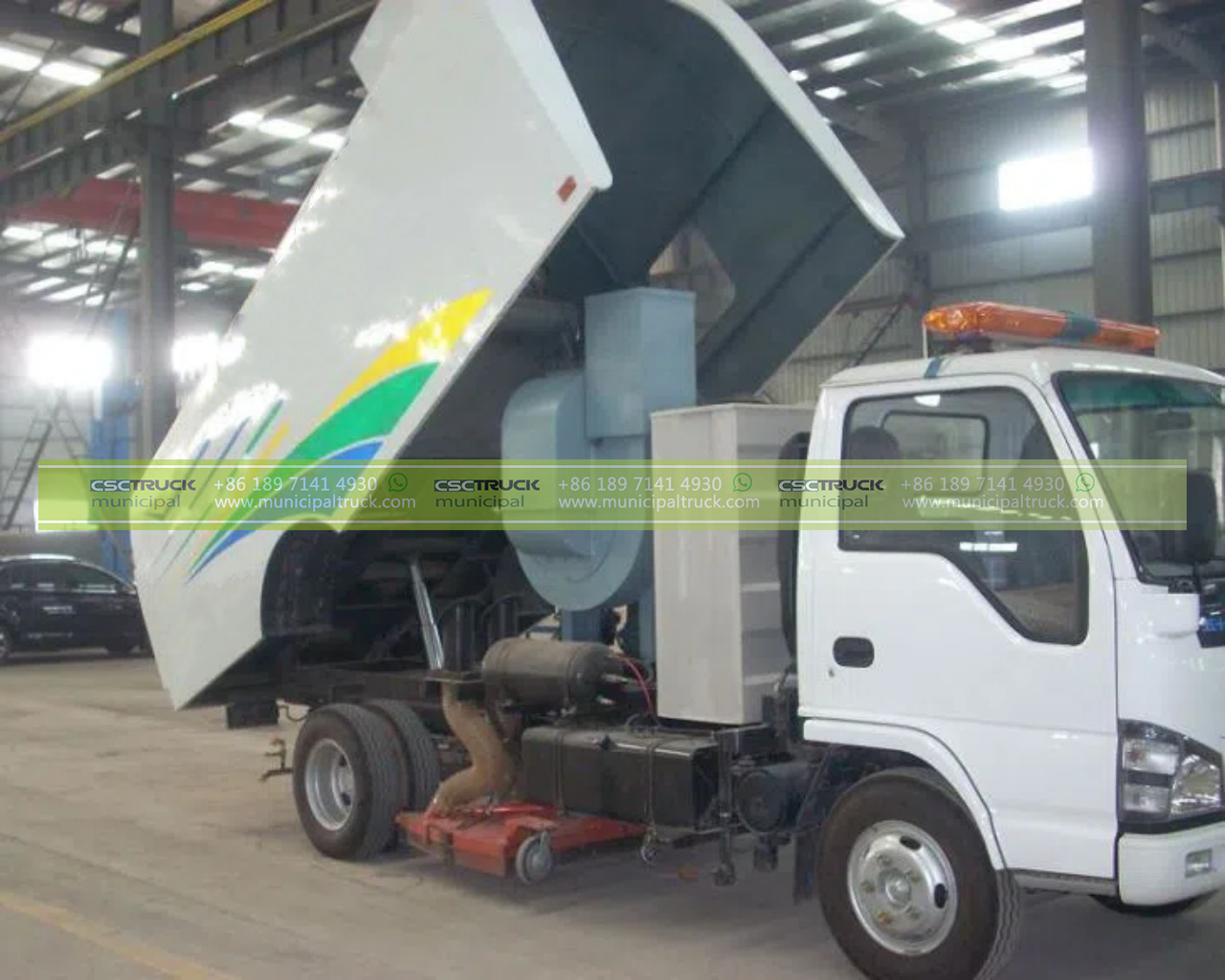
Waterless Sweeper Trucks: A Sustainable Alternative
Waterless sweeper trucks represent a significant leap forward in sustainable urban sanitation. These innovative vehicles are designed to clean streets and public spaces without consuming copious amounts of water. Here’s how they work and why they are gaining popularity:
1. Advanced Vacuum Technology
Waterless sweeper trucks are equipped with advanced vacuum systems that create powerful suction to lift and capture debris from the surface of the street. This technology eliminates the need for water to control dust, making cleaning more sustainable.
2. High-Efficiency Filtration
One of the key features of waterless sweeper trucks is their high-efficiency filtration systems. These systems can capture particles as small as fine dust, ensuring a thorough and effective cleaning process. Traditional sweepers often struggle to capture such small particles, allowing them to remain in the environment.
3. Reduced Environmental Impact
By eliminating the use of water, waterless sweeper trucks significantly reduce their environmental impact. They do not contribute to water pollution, and they have lower emissions compared to diesel-powered street sweepers. This makes them a cleaner and more sustainable option for urban cleaning.
4. Cost Savings
While the initial cost of waterless sweeper trucks may be higher than traditional sweepers, they offer long-term cost savings. Reduced water usage, lower maintenance costs, and improved fuel efficiency all contribute to a more economical cleaning solution over time.
5. Versatility
Waterless sweeper trucks are versatile and can be used in a variety of settings, including urban streets, parking lots, industrial facilities, and construction sites. Their adaptability makes them a valuable asset for municipalities and businesses seeking efficient cleaning solutions.
6. Water Conservation
In regions where water is scarce, waterless sweeper trucks provide a welcome solution by conserving this precious resource. They enable municipalities to maintain cleanliness without depleting their water supplies.
7. Noise Reduction
Compared to traditional street sweepers, waterless sweeper trucks are often quieter, thanks to their vacuum-based cleaning technology. This means less noise pollution in urban areas during the cleaning process.
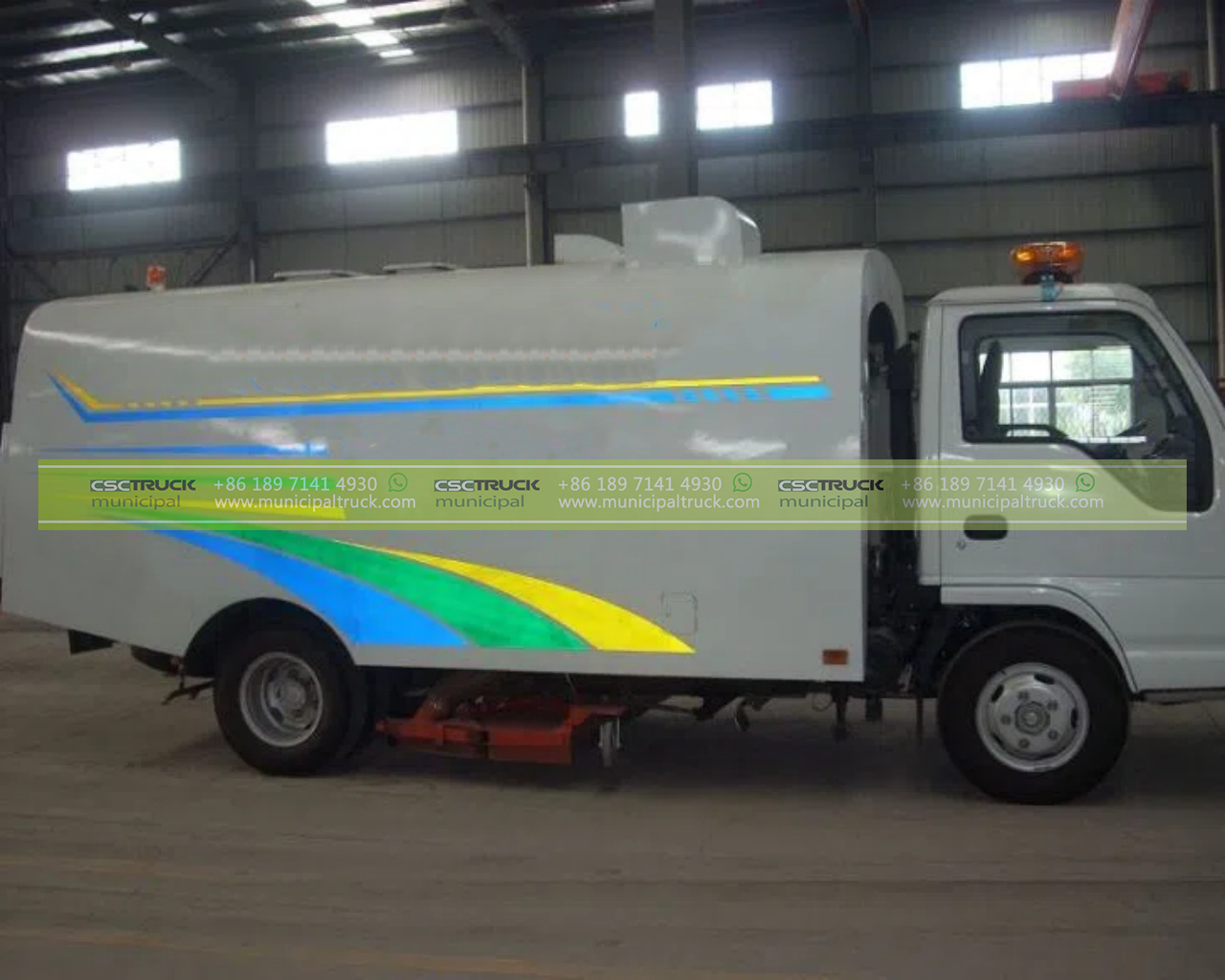
Real-World Examples of Waterless Sweeper Trucks
Several cities and organizations have already adopted waterless sweeper trucks, showcasing their effectiveness and sustainability. Let’s take a look at a few notable examples:
1. Los Angeles, California
The City of Los Angeles has incorporated waterless sweeper trucks into its fleet of street cleaning vehicles. By doing so, the city aims to reduce its water consumption and environmental impact while maintaining clean streets in a region often plagued by drought.
2. Stockholm, Sweden
Stockholm, known for its commitment to sustainability, has also embraced waterless sweeper trucks. These trucks are used in the city center, helping Stockholm maintain its reputation as one of the cleanest and most environmentally conscious cities in the world.
3. Private Cleaning Companies
Many private cleaning companies worldwide have adopted waterless sweeper trucks as part of their fleet. These companies recognize the market demand for sustainable cleaning solutions and the cost savings associated with reduced water usage and maintenance.
The Future of Urban Sanitation
Waterless sweeper trucks represent a significant step forward in the quest for more sustainable and efficient urban sanitation solutions. As cities around the world face growing challenges related to water scarcity, pollution, and environmental impact, these innovative vehicles offer a cleaner, greener, and more cost-effective way to keep our streets clean.
Challenges and Considerations
While waterless sweeper trucks offer numerous benefits, there are still some challenges and considerations to address:
1. Initial Costs: The upfront cost of acquiring waterless sweeper trucks can be higher than traditional sweepers, which may pose a barrier to adoption for some municipalities.
2. Maintenance: While they generally require less maintenance than traditional sweepers, waterless sweeper trucks do have complex vacuum systems that need periodic servicing.
3. Education and Training: Operators may require training to operate and maintain waterless sweeper trucks effectively.
4. Infrastructure Compatibility: Some cities may need to adapt their infrastructure to accommodate waterless sweeper trucks, such as providing suitable refueling and maintenance facilities.
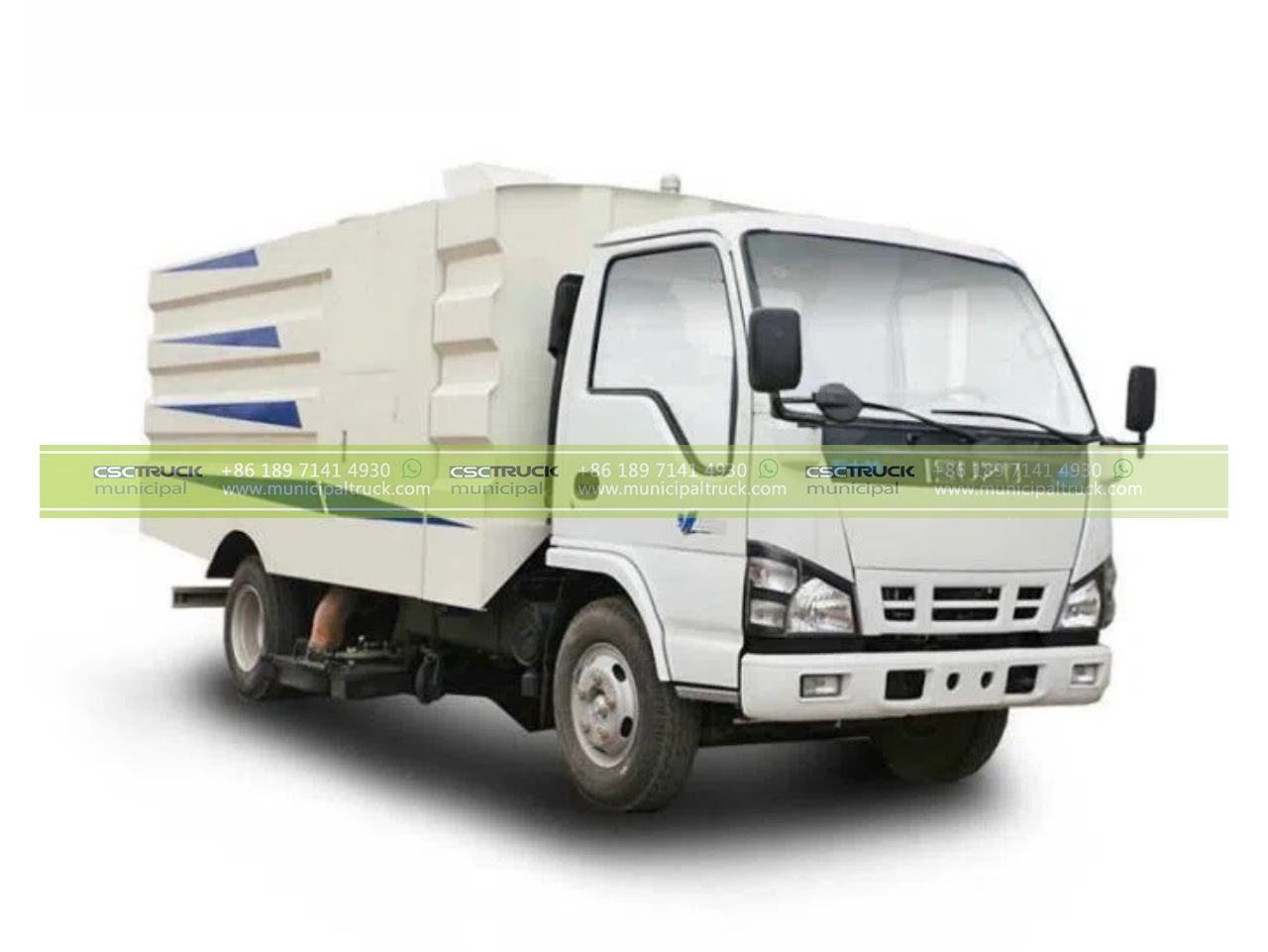
Conclusion
Sustainable cleaning innovations like waterless sweeper trucks are reshaping the future of urban sanitation. They offer a cleaner, more efficient, and environmentally friendly alternative to traditional street sweepers, addressing key challenges such as water consumption, pollution, and energy use. As more cities and organizations recognize the value of these innovative vehicles, we can expect to see them becoming increasingly common on our streets, contributing to cleaner, greener, and more sustainable urban environments. Waterless sweeper trucks are not just a solution to today’s challenges but also a step towards a more sustainable and responsible future for our cities.
Contact us for this municipal truck or similar trucks: [email protected] Call us or What's APP us: +86 189 4292 3930
